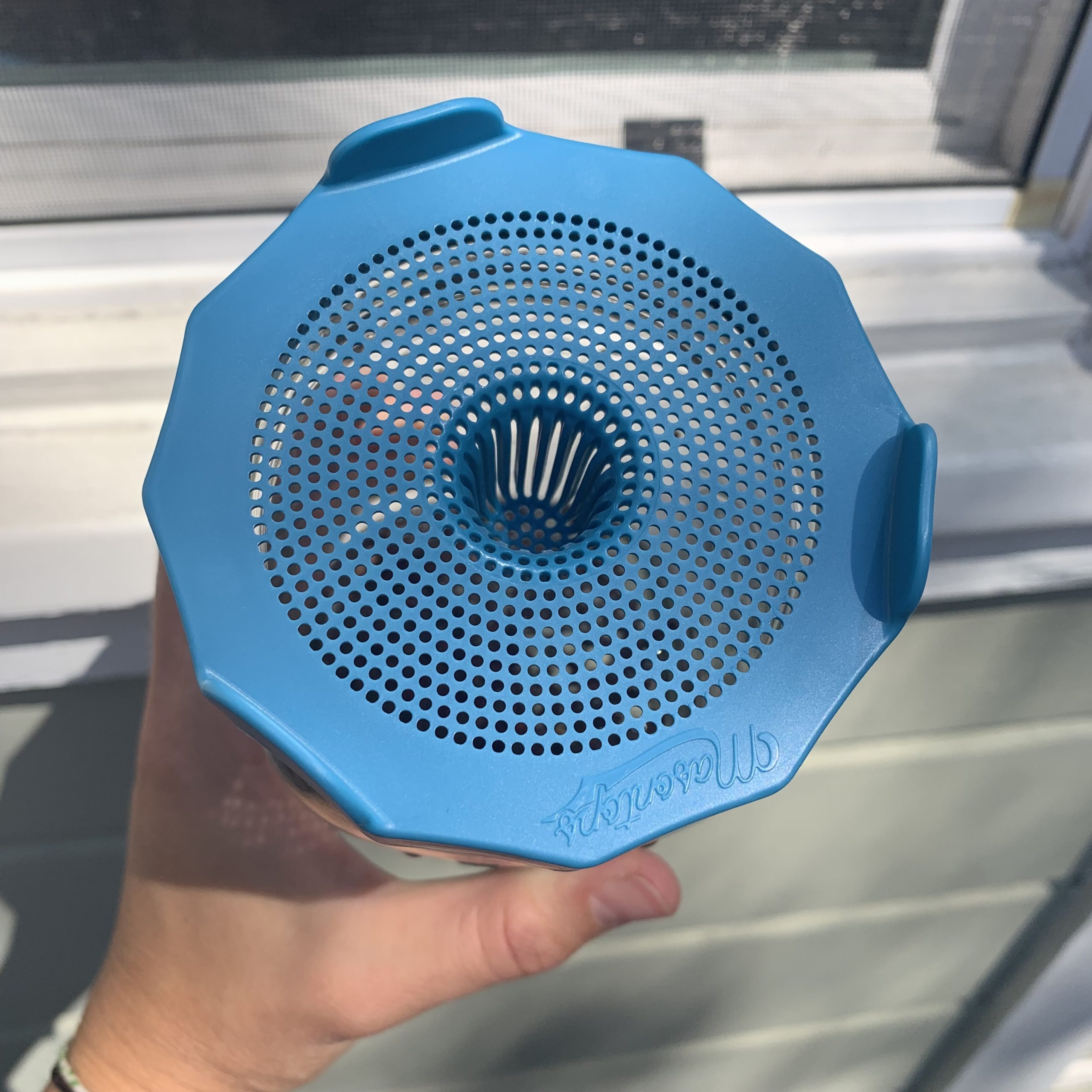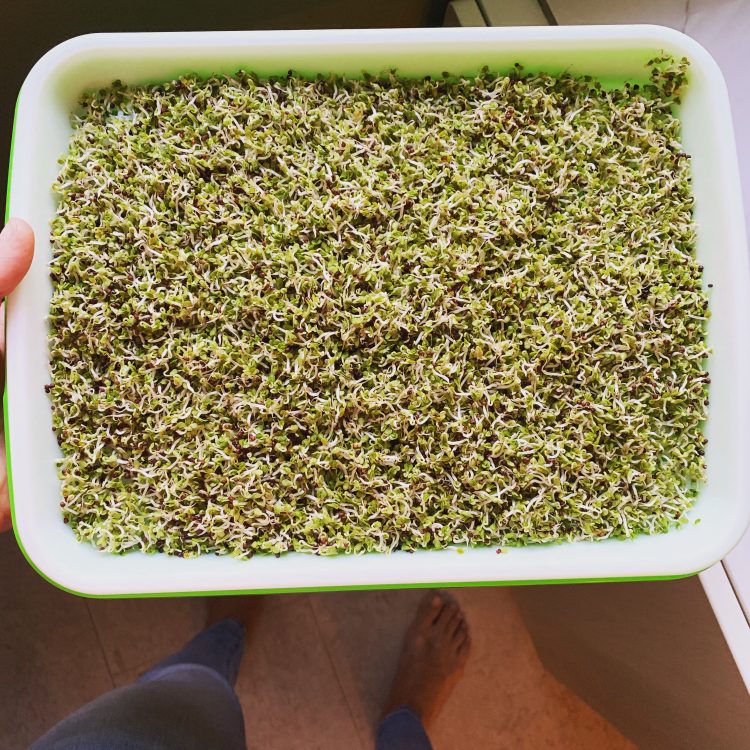I am admittedly very new to the world of sprouting, and all horticulture in general. And in this particular stage of life, with 3 kids under 6, I don’t have the time or patience to look after more living things. But this is different. I have spent weeks trying to perfect this process, because these tiny plants are worth it.
About a year ago, I was diagnosed with a rare chronic condition, apparently brought about by a weakness in my immune system. It’s called Recurrent Respiratory Papillomatosis (RRP), and it essentially causes benign tumors to grow on my vocal cords and potentially my airways. While it’s not usually a life-threatening condition, it does affect my voice. I’ve already had three surgeries to remove the growths, each requiring me to take several days of complete voice rest (which is obviously easy to do with 3 small children, hah!). This whole thing is very new to me, so I’m navigating it one day at a time and doing all I can to bolster my defenses.
Back to the sprouts. We all know cruciferous vegetables like broccoli are ridiculously good for us, but broccoli sprouts contain a significantly higher concentration (10-100 times!) of a well-studied plant compound, sulforaphane. Sulforaphane has been shown to reduce the risk of several types of cancer and protect against neurodegenerative diseases such as Alzheimer’s. If you type “sulforaphane” into pubmed, you get over 2,000 results! This compound is well studied for enhancing antioxidant pathways, like Nrf2. It’s antimicrobial, anti-inflammatory, and it protects our cells from aging. Studies even show that it can help the body detoxify the pesticides we consume and prevent the harmful effects of heterocyclic amines that form on the grilled meats we consume (side of broccoli sprouts with your burger, anyone?).

Sprouts are nutrition powerhouses. They contain all the elements needed to create life (i.e. a plant!). Sprouting from a seed into a plant requires enzymes, and these enzymes make the vitamins and minerals more bioavailable to us than they are in their mature vegetable form. If you geek out on nutrition and biochemistry like me, you should check out Dr. Rhonda Patrick (https://www.foundmyfitness.com/). She’s wicked smart on all things nutrition, and she’s the one who turned me onto sprouts in general.
You can buy sprouts at most health food stores, so maybe you want to try them out first before you commit to growing them. Add them to your salad, mix them into a smoothie, or include them in a wrap. They don’t have a strong flavor, and to me, the nutritional payback is worth the effort. But if you’re ready to experiment with making them on your own. Here’s what you need.
1. wide mouth mason jars
2. spouting lids
3. broccoli seeds

Step 1. Measure 2 tablespoons of seeds into a mason jar and cover them with water.
Step 2. Put the spouting lid on, and set it in the cupboard overnight.
Step 3. In the morning, pour the water off and rinse the seeds with fresh water. Pour all of this water off, shaking a little as you drain it, and prop the jar up against the wall at an angle with a piece of paper towel or a towel underneath to absorb any drips. Make sure the opening has some airflow.
Step 4. Rinse the sprouts every morning and evening until the little sprouts are bright green and about one inch long. This is when sulforaphane levels are at the peak.
Step 5. Eat them! Or refrigerate for up to 3 days.
Rhonda Patrick’s recommendations are pretty specific with regards to the amount of sprouts you should be eating to achieve the results studied, but I’m not as diligent as I should be. I just eat a couple handfuls per day and hope that I’m getting some benefit. I also eat sunflower sprouts, pea shoots, wheat grass juice, mung bean sprouts, and whatever I can find at the store to keep some variety.
If you need help troubleshooting the sprouting process, leave me a comment or contact me for help. It took a bit of trial and error it get it right, so keep trying!


